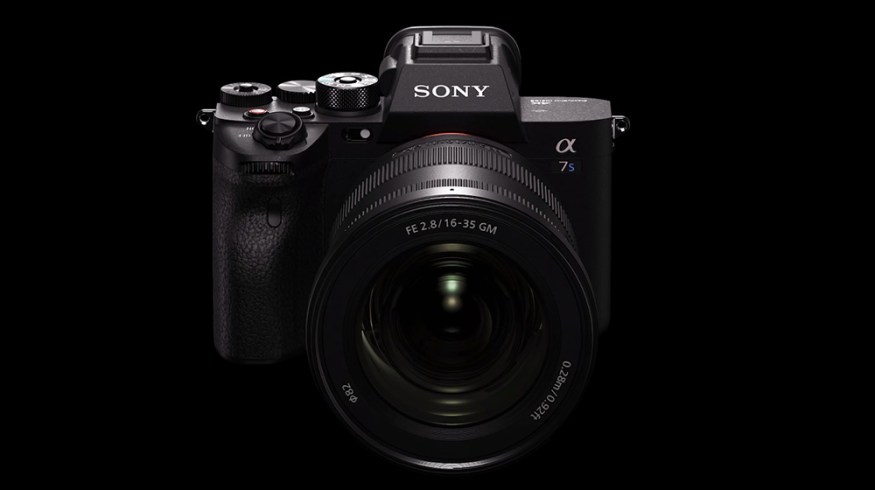
Filmmaking Gear Highlights of 2020 – Indie Edition
Like most industries, the video gear market was inundated with new gear this year. Here are some select highlights to consider.
I wouldn’t say I like opening this article by commenting on the grueling nature of 2020, as I’m sure you’ve already read it a hundred times for other “end of year” lists. However, it would be hard to negate the effects the pandemic has had on the creative industries. It’s been a turbulent year, from productions grinding to a halt to equipment manufacturing hitting the pause button.
However, as we moved past the storm, we started to see companies announce new items when the time was right. Some highly anticipated, others a big surprise.
This is by no means “the best of” list or any form of tiered rank listing. It’s simply a catalog of items that have piqued my interest throughout the year. Dealing with the mid-tier bracket of around $5,000, let’s have a look at some of my favorite announcements of 2020.
Sony A7S III – $3,498
The Sony A7S II was released in 2015, which by camera standards is a millennia ago. Loved for its low-light capability and enhanced filmmaking features, which were favored over the features found in the A7 II and A7 III, five years later, the technology was quickly becoming outdated. However, for every broadcast event after 2015, users were eagerly awaiting the next iteration of the filmmaking variant of the A7 line. But, it never came—year after year. There was even speculation that the A7S III was never happening.
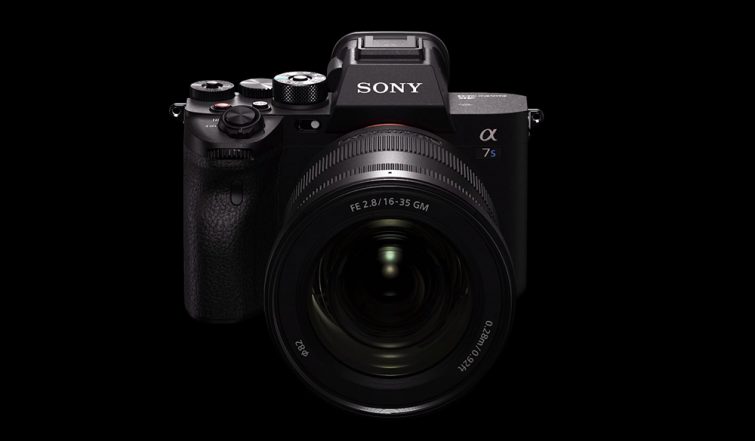
However, after several teasers, the A7S III was finally announced and released earlier this year. The primary specs are:
- 12.1 Exmor R CMOS sensor
- 4K at 120p
- 120p & 240p in full HD
- 10-bit internal recording
- 4:2:2 color sampling
- 409,600 ISO
- 15+ stops of dynamic range
As expected, and somewhat perfectly timed with Canon’s EOS R5 heating issues, the a7S III was welcomed with joyous fanfare from users.
DJI RS2 – $849
The DJI RS 2 is the successor to the Ronin-S. It’s lighter by design, weighing just 2.36 pounds, but it can carry up to a ten-pound rig.
There was something of a gap between the Ronin-S and the Ronin-M. While the M model can carry larger cameras, it comes in at a heftier price at $1,119. The S is targeted towards the mirrorless user at $749. Still, over the past few years, we’ve seen smaller cameras get heavier and wider, leaving the Ronin-S obsolete for some models or just difficult to use (like the BMPCC6K).
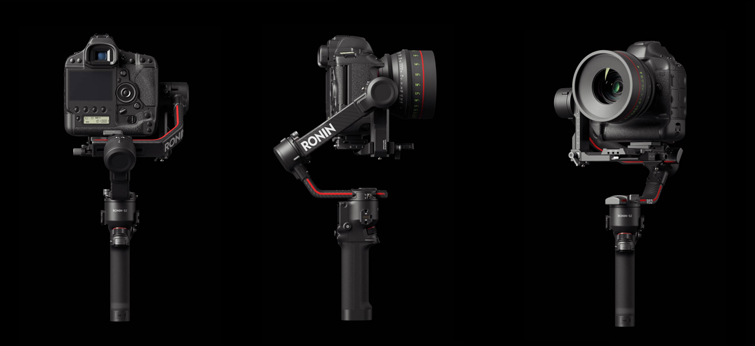
The RS 2 sets to bridge that gap as the DJI flagship stabilizer for professional filmmakers. The RS2 can handle heavier rigs, allowing you to use cameras like the ARRi ALEXA Mini LF, Blackmagic Pocket Cinema Camera 6K, the Canon 1DX, or even a camera with a battery grip attached.
As noted by Mike Maher in our write up:
Not only do you retain the 3-axis control, but there are also much better tracking systems in place, as well as more configurations for you to shoot in. The RS 2 is a great combination of both full-size Ronin 2 and Ronin-S features. You can tell a lot of thought and testing went into the stabilizer to give us the most versatile tool.
The RS2 is slightly less expensive than the Ronin-M, but will cost more than the Ronin-S with the advanced features.
- 3-axis
- Weighs 2.36 lbs
- 10-pound payload
- 12-hour battery life
- Active track 3.0
- 1.4″ full-color LCD touchscreen
- Compact design for easy transport
- RavenEye 1080p transmitter compatible
DaVinci Resolve Speed Editor – $295
Perhaps what will be the latest entry into the list is the DaVinci Resolve Speed Editor. The company announced this release in November and users have just started to receive their shipments.
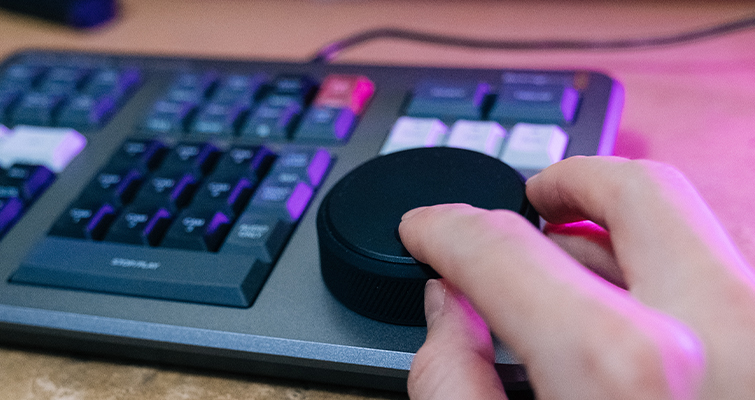
Like the 2019 DaVinci Resolve Keyboard, the Speed Editor is a peripheral that gives the editor precise and efficient control of the timeline with dedicated function keys and a multi-operational search dial.
While the 2019 keyboard is a fantastic tool, it comes with a steep price and is equally large and heavy. The Speed Editor is relatively cheaper and more compact. As noted in our review, although the Speed Editor is primarily targeted for cut page use, it can also dramatically increase the workflow on the standard edit page. And, even though it’s lost the QWERTY section of the keyboard, the controls for each edit function allow you to perform multiple tasks simultaneously.
- Source tape allows faster clip searching
- Large trim in and out buttons
- New keyboard modes for intelligent editing
- Buttons to allow search dial to live trim
- Buttons to change the transition type
- Integrated search dial control
- Keypad for direct timecode entry
NVIDIA RTX 3000 series – $499/$699/$1,499
Earlier this year, NVIDIA announced three brand new GPUs to kickstart the 3000 series.
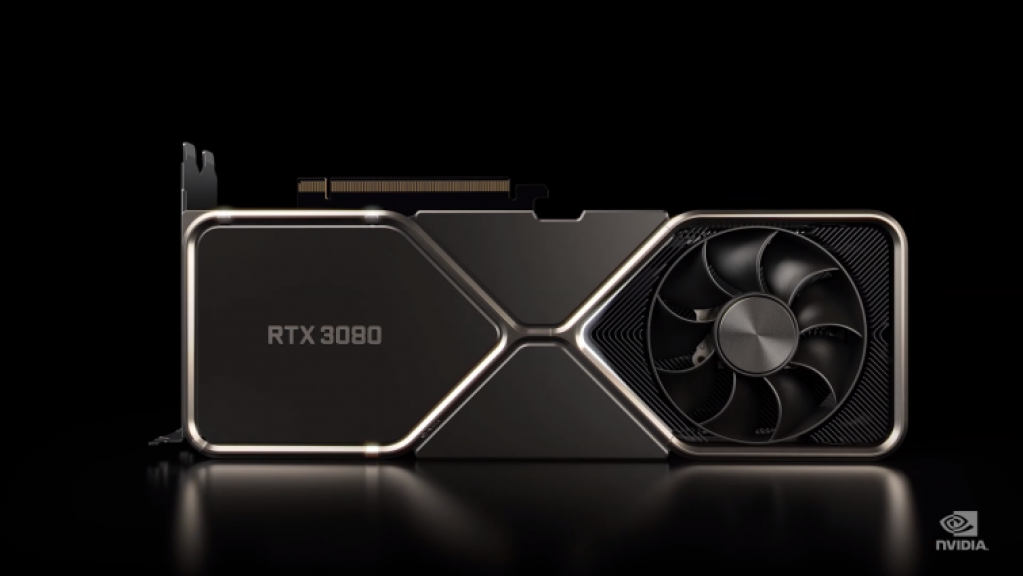
- The affordable (to some) RTX 3070 at $499
- The flagship RTX 3080 at $699
- The colossus RTX 3090 at $1,499
While it may seem initially perplexing to include a line of new GPUs for an end-of-year filmmaking equipment list, you have to acknowledge that with the increase in camera resolution and RAW recording, 2015 GPUs and CPUs aren’t cutting it anymore.
The RTX 3000-series of GPUs are capable of 3D rendering times that are up to two times faster than the current NVIDIA GPUs. Alejandro notes that visual effects artists and animators use 3D rendering software, such as Blender Cycles and Maxon Cinema 4D.
While some NLEs are more lenient on the CPU, you have other software, such as Resolve, which relies heavier on GPU power. If you find those 6K files are stuttering, you may need an upgrade. However, you’re not going to be able to just plug the 3000 series into any old computer. You may have to update the entire system.
Aputure 600D – $1,890
Aputure typically makes their announcements either at NAB or IBC, but with both shows canceled this year, we were treated to live reports (and treats they were).
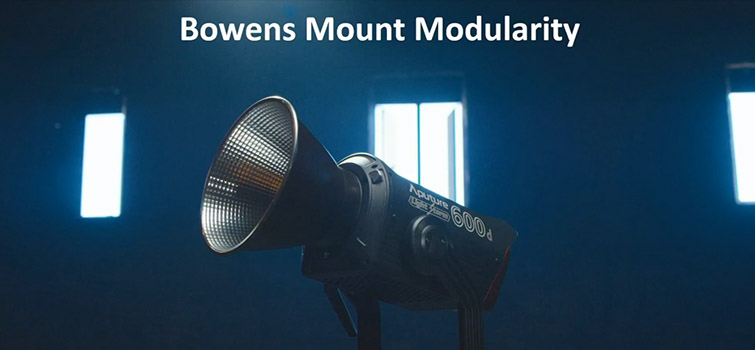
First, we have the 600D. This light is similar to the rest of the “D” family—a single chip LED fixture with a reflector. Like the 120D and 300D, the 600D also packs a punch, but it hits a lot harder. For example, as noted in our coverage of the 600D, it’s considerably brighter than an M18 with a 1200W bulb in it. That’s 100,000 lux compared to the 70,000 lux of a D12 HMI.
- Color: 5600K, CRI/TLCI: 96
- Beam angle with 55° reflector
- Wireless DMX, Bluetooth control
- 4 dimming modes, wireless range: 328′
Nova P300C – $1,699
The second light Aputure released this year is the Nova P300C. It feels like this light has been teased almost as much as the A7SIII.
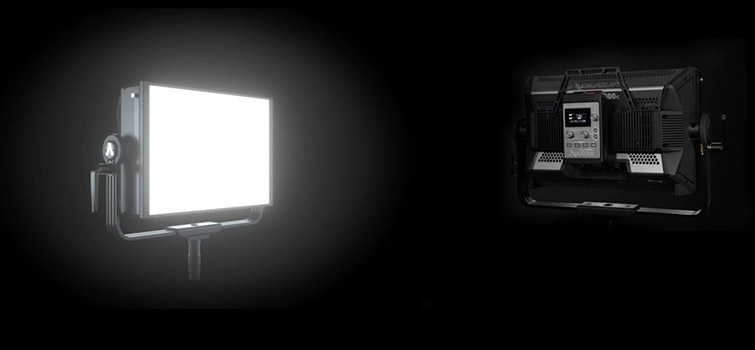
What makes this light specifically unique and highly anticipated is that it’s an RGBWW light. That means it can just about integrate into any ambient light situation, match other light fixtures, or just for creative expression, switch to the millions of colors found with the RGB wheel.
This light follows in Aputure’s tradition of creating fixtures that pack more punch than the usual competitor, but cost just a fraction of the high-end manufacturers. The C300P has more output than both the ARRI S30-C and the Kino Flo Image L80. Both cost well over $4,000, whereas the P300C costs just $1,699. However, currently obtaining one is just as difficult as picking up a NVIDIA 3000 series GPU.
- Variable color temperature: 2000-10,000K
- CRI/TLCI:95, full RGB adjustments
- Hue, saturation, light intensity control
- DMX, Bluetooth, Sidus link control
Canon EOS C70 – $5,499
In 2020, the EOS R5 was expected to be a revolutionary tool like the 5D Mk II was with its 8K recording output. It was going to be Canon’s next big thing. But, with the camera overheating and a batch of other problems, the anticipation was quickly doused.
However, a few months later, they introduced the Canon EOS C70. This camera is something of a hybrid of the new EOS R line and their cine camera line.
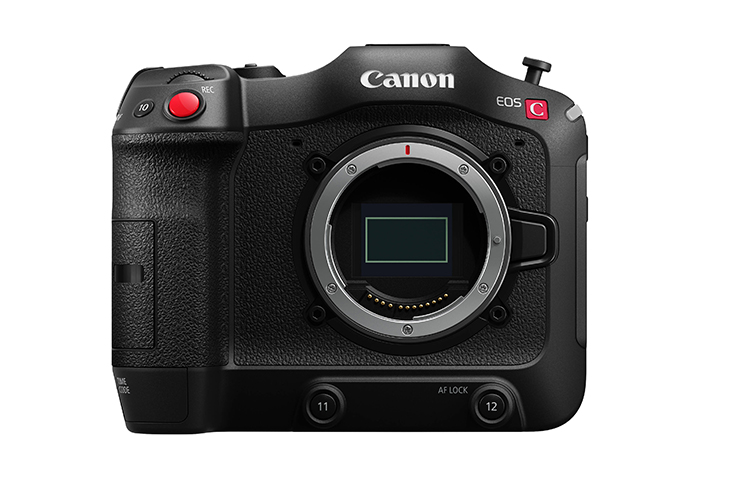
The C70 lacks the typical big numbers and applications that other brands are chasing, like full-frame 6K RAW or 8K. However, the C70’s Super 35mm sensor with 4K is wholly respectable.
- Super 35 dual gain output (DGO) sensor
- 4K 120p, 2K crop 180p HDR capture
- Canon log 2, 3, PQ & HLG recording
- RF Lens Mount / EF Mount with adapter
- DIG! C DV7 image processor
- 16+ stops of total dynamic range
- Built-in ND filters
- Auto ISO & gain
- Dual Pixel CMOS AF & EOS iTR AF X
- 1 BNC timecode
- 2 Mini-XLR audio inputs
- Dual SD card slots, LUT/Long GOP support
Blackmagic URSA Mini Pro 12K – $9,995
Okay, so obviously this doesn’t fall within the boundaries of the sub $5K margin. However, it was such a huge announcement that it deserves mention.
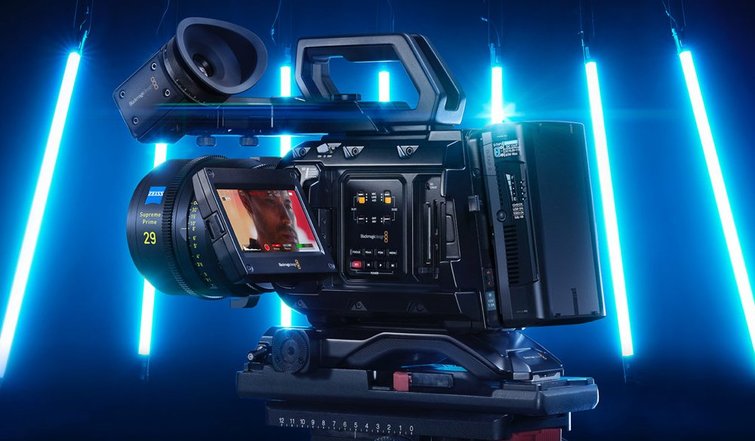
Yes, in 2020, we were treated to the first 12K camera, with the URSA Mini Pro 12K. The body largely remains the same design as the other readily available models like the URSA Mini 4.6K and URSA Mini Pro G2. However, the internal electronics of the 12K have been replaced. There’s a new sensor, a new film curve, new color science, and a whole new host of recording features.
- Blackmagic RAW across all resolutions
- Up to 60fps 12K
- 110fps at 8K
- 220fps (Super 16 crop) at 4K
- Interchangeable lens mount (ships with PL)
- Built-in ND filters
- Dual CFast & USH-II SD
- SuperSpeed USB-C expansion port
- And, of course, it classically ships with the Studio version of Resolve
There has been a slight bit of confusion about why 12K is needed when many consumers are only just shifting to 4K, let alone 8K! However, the practice of filming in 12K isn’t to deliver in 12K resolution. Instead, that 12K sensor delivers oversampled 4K and 6K images. We have a 12K on the way and will explain this feature more in-depth come the start of 2021.
Fuji XF 50mm F/1.0 – $1,499
I was extremely excited about this lens and said it would be an end of year treat, but I never got around to ordering it. The Fuji F/1.0 is an unprecedented entry from Fuji as it marks the arrival of the fastest autofocus lens for mirrorless cameras.
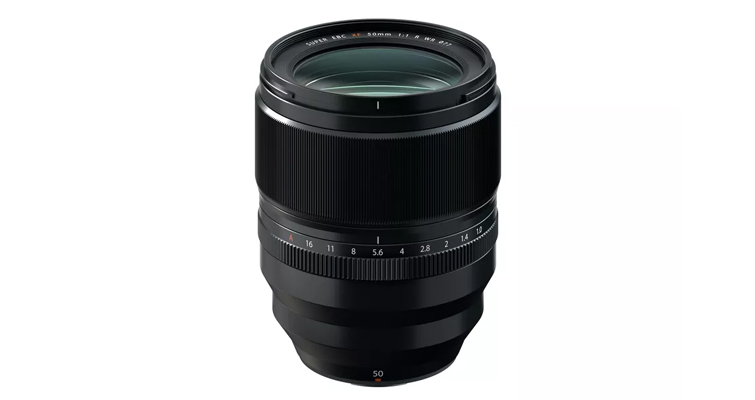
At 50mm, it wields an equivalent field of view of around 75mm (Fuji uses APS-C sensors). As a Fuji 16-55mm 2.8 Red Label lens owner, this lens will likely be just as chunky and heavy as the zoom. With an F/1.0 aperture, you can expect some beautiful, dreamlike bokeh.
- Саmеrа Lеnѕ Туре Ѕhоrt Теlерhоtо Рrіmе
- Fіltеr thrеаd (mm) 77
- Fосаl lеngth (tеlе) 50
- Fосаl lеngth (wіdе) 50
- Lеnѕ еlеmеntѕ 12
- Lеnѕ grоuрѕ 9
- Мах ареrturе – tеlе 1
- Мах ареrturе – wіdе 1
- Міnіmum ареrturе 16
- Міnіmum fосuѕ dіѕtаnсе (m) 0.7
- Angle оf vіеw (dеgrееѕ) 31.7
- Ареrturе blаdеѕ 9
Even though 2020 has been an unsettled year for almost everyone in every industry, there’s still been an abundance of new gear entering the market.
However, as noted, I suggested that this was a cherry-picked list of gear that appeals to me. Given that so much equipment was introduced this year, you might find yourself asking “why these picks?”
As a filmmaker who often works either as a lone operator or in a skeleton crew, I’m looking for equipment that condenses tasks and increases my efficiency. The less I carry, the better. The gear I’ve highlighted in this list echoes that ethos. Of course, we can’t overlook that I’ve omitted the RED KOMODO, and in its place, I have the C70. A cardinal sin for some, I’m sure. However, the C70 has electronic image stabilization with a built-in ND filter. That, in many circumstances, makes it a more efficient choice for my workflow.
And, that’s the theme that runs throughout this list. It’s not so much about the larger resolution, the better color science, or faster frame rates that can be found elsewhere. Instead, I considered how this equipment eases the tension of filmmaking.
For more gear talk, tips, and tricks, check out the articles below:
- Is RED’s Newest Camera Completely Pointless?
- The Best New Lens Mount Announcements of 2020
- A Quick View of the New Panasonic Lumix S5
- Canon Officially Unveils the New EOS R5 and R6 Cameras
- The Best 360-Degree Cameras Currently on the Market
Cover image via Sony.






